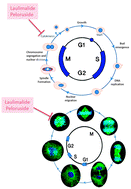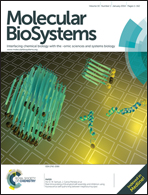Characterizing the laulimalide–peloruside binding site using site-directed mutagenesis of TUB2 in S. cerevisiae†
Abstract
Baker's yeast, Saccharomyces cerevisiae, has significant sequence conservation with a core subset of mammalian proteins and can serve as a model for disease processes. The aim of this study was to determine whether yeast could be used as a model system to identify new agents that interact with the laulimalide–peloruside binding site on β-tubulin. Agents that bind to this site cause stabilization of microtubules and interfere with cell division. Based on the location of the proposed laulimalide–peloruside binding site and of previously identified mutations shown to cause resistance in mammalian cells, we made the corresponding mutations in yeast and tested whether they conferred resistance to laulimalide and peloruside. Mutations A296T and R306H, which cause 6-fold and 40-fold increased resistance in human 1A9 ovarian carcinoma cells, respectively, also led to resistance in yeast to these compounds. Similarly, other mutations led to resistance or, in one case, increased sensitivity. Thus, we conclude that yeast is an appropriate model to screen for small molecule drugs that may be efficacious in cancer therapy in humans through the newly characterised laulimalide–peloruside binding site.


 Please wait while we load your content...
Please wait while we load your content...